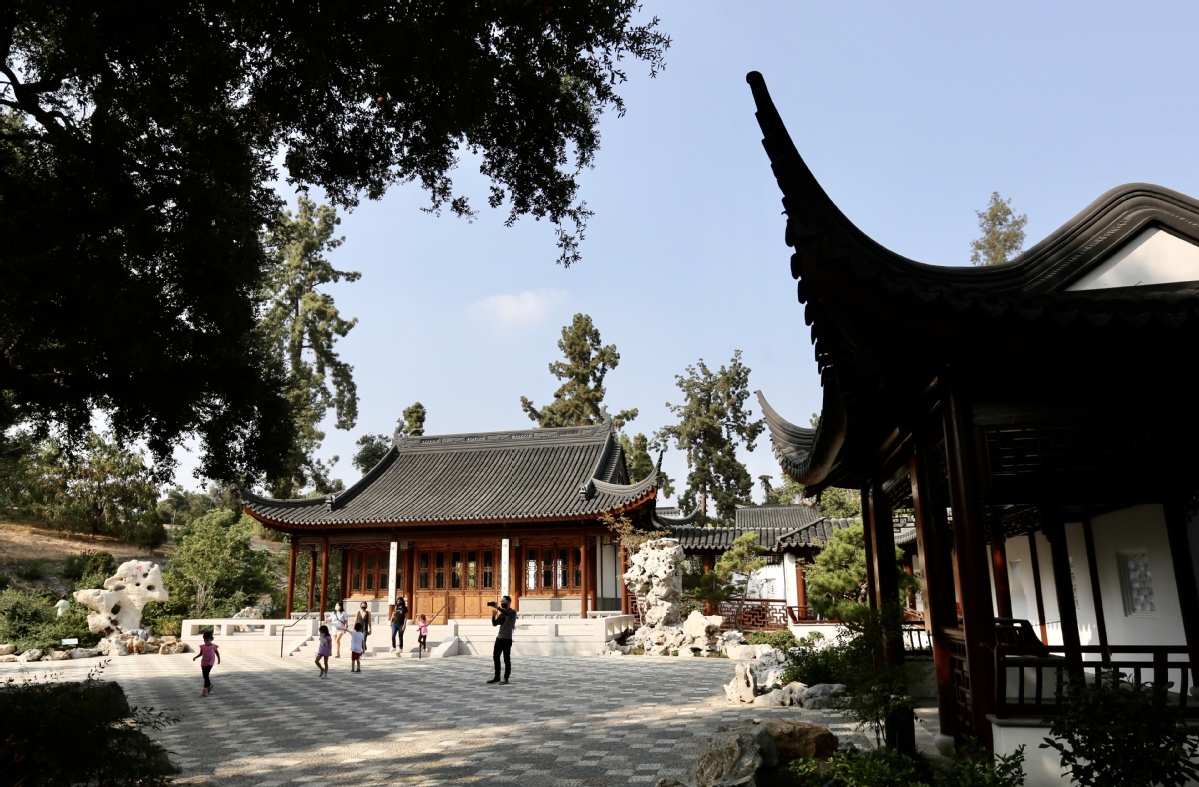 |
|
Liu Fang Yuan, also known as the Garden of Flowing Fragrance, in San Marino, Los Angeles County, California, United States, reopens to the public in October with 4.6 hectares of new landscape. [Photo/Xinhua] |
For Mei-Lee Ney, a Shanghai-born immigrant and a major donor to the garden, it is a place where she can share her heritage with her community.
"I just thought it was a wonderful thing to do, to bring the Suzhou garden-to bring a part of China-to the United States, and it was wonderful that it was coming to my hometown," said Ney, president of an investment advisory company in Pasadena, Los Angeles County, who migrated to the US at age 2.
Although she was still an infant when her family left Shanghai, she has fond memories of traveling to China with her mother as an adult. She has been working on her mother's memoirs for many years, and the garden evokes tales of her mother's childhood and that of her grandparents.
"I just feel that I have such a deep connection to China through my mother. The Chinese garden really reminds me of her and keeps me connected to her memories and also to where I was born," Ney said.
A new addition during the third phase of construction was Verdant Microcosm, a 1,662-square-meter area designed to display penjing. It holds a special place in Ney's heart because her mother had four penjing in the courtyard at home.
"She used to tell me about them a lot, how much she loved them and how beautiful they were, so this courtyard, in particular, really reminds me of my mother," Ney said.
She is one of the many Chinese American donors in the area who rallied together to raise millions of dollars to bring their rich heritage to a mainstream institution in Southern California.
The total cost of the garden was $54.6 million, which was contributed by individuals, corporations and foundations, particularly from Chinese and Chinese Americans in the region.
The garden's donor walls represent a broad range of the Chinese diaspora that transcends regional and political differences, including families from the Chinese mainland, entrepreneurs from Hong Kong and Taiwan, Chinese American families who have been in the US for more than 150 years and migrants who relocated to the country 10 years ago.
"I think this might be the most successful and probably one of the first efforts where the Chinese communities really came out and were generous, philanthropic and donated to something that meant a great deal to them, as well as benefiting the community that they live in," Ney said.
"It was a wonderful thing to see that it was really supported by the Chinese community, and not just the American community, as most things at the Huntington are."